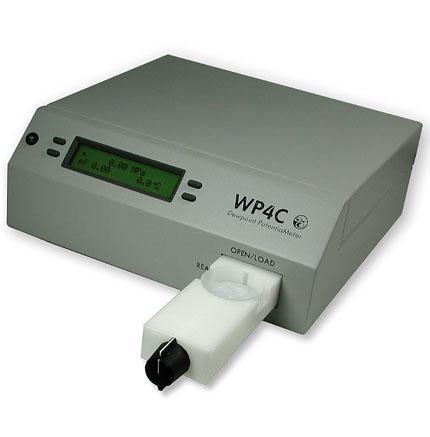Canada’s Instrumentation Leader Since 1946.


Fast, Accurate Water Potential Measurements Use the WP4C to measure water potential in 5 to 10 minutes. Range: -0.1 to -300 MPa* Versatile The WP4C can be used to measure the water potential of any porous material. It’s typically used to analyze soil, soilless substrates, plant material, and seeds, but it has been used to […]
Use the WP4C to measure water potential in 5 to 10 minutes. Range: -0.1 to -300 MPa*
The WP4C can be used to measure the water potential of any porous material. It's typically used to analyze soil, soilless substrates, plant material, and seeds, but it has been used to measure a variety of unusual things, including apples, bricks, oil, and insect carapaces.
The WP4C is a benchtop instrument. To measure water potential, you place the sample in a round sample cup (4cm in diameter and 1cm tall) and set the cup in the lexan sample drawer. You slide in the drawer and turn the knob to seal the chamber. After about 5 minutes, the WP4C will beep and show your final water potential reading.
Measurements can be inaccurate if they're made too soon. When run in Precise Mode, the new WP4C checks to make sure the sample has fully come to equilibrium before displaying a final reading.
The WP4C's new nickel Teflon sample chamber coating is hydrophobic. Less water absorption in the sample chamber means faster equilibrium.
The WP4C sensor is durable and easy to clean. The instrument can be calibrated using saturated salt solutions (mix your own or order single-sample vials of standards on the accessories tab). New algorithms let you fine-tune calibration for excellent accuracy (±0.05 MPa or better).
The HYPROP FIT Software can be used to plug in water potentail data collected by the WP4C for fitting different water retention models (i.e. van Genuchten, van Genuchten Bimodal, Brooks & Corey).
Copyright - 2025 - Hoskin Scientific